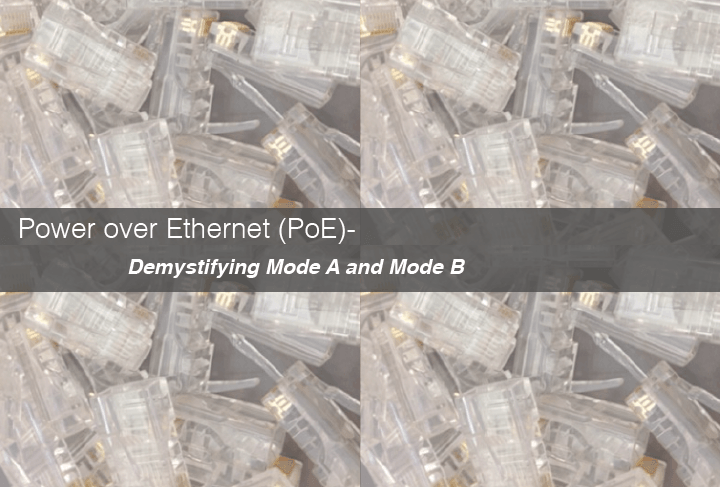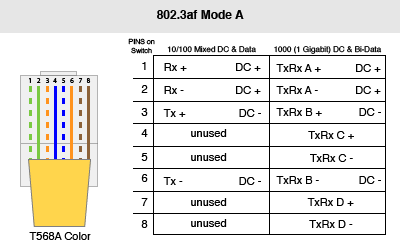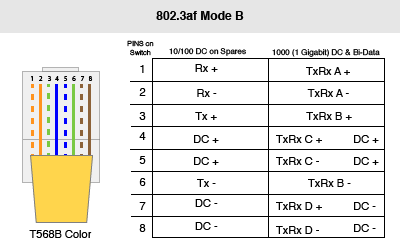Power over Ethernet (PoE) can transmit power up to 100 meters. These long cables are easier to deploy than electrical cabling in locations where power is absent. Because PoE relays relatively low amounts of power, the technology presents low risks of electrical hazards.
When installing a Powered Device (PD) with a PoE-enabled Power Sourcing Equipment (PSE), it is important to take note that the devices use compatible modes to supply power across pins.
Mode A vs. Mode B
PoE relays power using two different modes known as Mode A and Mode B in 10BaseT and 100Base-Tx.
Mode A utilizes data pairs 1-2 and 3-6 to deliver power. Data signals cannot interfere with power signals since both signals are at opposite ends of the electromagnetic spectrum.
Mode B on the other hand, utilizes its “spare pairs” to supply power. The power sourcing equipment applies a positive voltage to pins 4- 5 and a negative voltage to pins 7-8.
With 1000Base-TX, power is sent through the spare pairs when operating in Mode B and power is sent through the data pairs when operating in Mode A.
Ultra PoE
Injectors that deliver 60 watts, double the capacity of PoE+, utilize both spare pairs and data pairs, Mode A and Mode B, to supply power.
PDs are compatible with both modes and will normally adjust themselves according to the mode used by the PSE.
PSEs that relay power through their spare pairs (Mode B) are also known as midspan devices while those that relay power through their data pairs (Mode A) are referred to as endspan. Endspan devices tend to describe switches with PoE capabilities. Midspan units on the other hand, describe stand alone units such as injectors that will usually accompany switches with non-PoE capabilities.
Don’t forget to follow us on Facebook, Linkedin, and Twitter for more resources and the latest news on the computer information industry




Join the Discussion 3 Comment